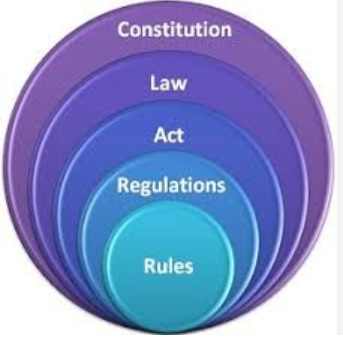Difference Between Acts and Bills
An act is a law that has been passed by both houses of Parliament and has received the President’s assent. A bill, on the other hand, is a proposed law that is under consideration by the Parliament.
Types of Bills
There are four main types of bills in the Indian parliamentary system:
- Ordinary Bill: An ordinary bill is a proposed law that does not involve any changes to the Constitution. It can be introduced in either house of Parliament and must be passed by both houses before being sent to the President for assent.
- Money Bill: A money bill is a proposed law that exclusively deals with financial matters, such as taxation, government spending, or borrowing. It can only be introduced in the Lok Sabha (Lower House) and must be passed by the Lok Sabha before being sent to the Rajya Sabha (Upper House) for recommendations. The Rajya Sabha has limited powers in relation to money bills and must return the bill to the Lok Sabha within 14 days.
- Financial Bill: A financial bill is similar to a money bill but may contain provisions related to other matters. There are two types of financial bills: Type I and Type II. A Type I financial bill contains only provisions related to financial matters, while a Type II financial bill may contain non-financial provisions as well.
- Constitutional Amendment Bill: A constitutional amendment bill is a proposed law that seeks to make changes to the Constitution of India. It must be passed by both houses of Parliament with a special majority (two-thirds of the members present and voting) and must also be ratified by at least half of the state legislatures.
Legislative Process
The legislative process in India involves several steps:
- Introduction: A bill is introduced in either house of Parliament by a minister or a private member. The bill is then published in the Gazette of India.
- First Reading: The bill is introduced in the house, and its objectives and reasons are explained.
- Second Reading: The bill is discussed in detail, and amendments may be proposed. The house then votes on whether to send the bill to a select committee for further scrutiny or to proceed with the third reading.
- Committee Stage: If the bill is referred to a select committee, the committee examines the bill clause by clause and may suggest amendments. The committee then submits its report to the house.
- Third Reading: The bill, along with any amendments, is put to a vote in the house. If passed, the bill is sent to the other house for consideration.
- Consideration by the Other House: The other house follows a similar process of readings and may pass the bill as is, suggest amendments, or reject the bill altogether.
- President’s Assent: If both houses pass the bill, it is sent to the President for assent. The President may give assent, withhold assent, or return the bill for reconsideration. If the bill is passed again by both houses, the President must give assent.
Important Acts in Indian History
- Indian Penal Code (1860): The Indian Penal Code is the main criminal code of India, which defines crimes and prescribes punishments.
- Government of India Act (1919): This act introduced the system of dyarchy, which divided the provincial governments into two parts: transferred subjects and reserved subjects.
- Government of India Act (1935): This act provided for the establishment of an All-India Federation and introduced provincial autonomy.
- Indian Independence Act (1947): This act partitioned British India into two independent dominions: India and Pakistan.
- Constitution (First Amendment) Act (1951): This act amended several articles of the Constitution and added the Ninth Schedule to protect land reform and other laws from judicial review.


